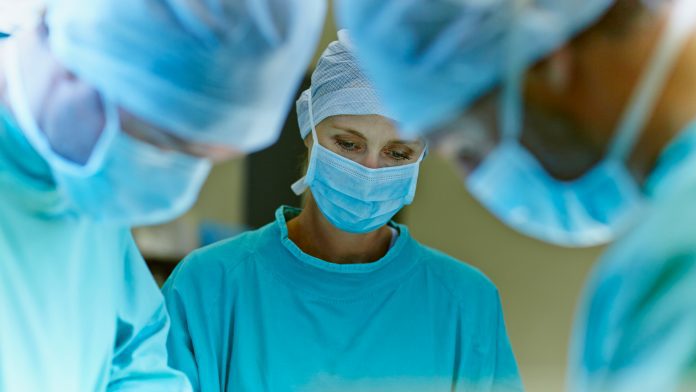
Doctors in Lisbon have reported that a 61-year-old man has received a double lung transplant after his lungs were damaged by COVID-19.
The patient contracted COVID-19 in January 2021 and was discharged from the hospital on 23 August 2021, marking the Centro Hospitalar Universitário Lisboa Central’s first successful lung transplant in a COVID-19 survivor.
The report was presented at Euroanaesthesia, the annual meeting of the European Society of Anaesthesiology and Intensive Care (ESAIC), held online this year (17-19 Dec).
75% of the patients’ lungs were scarred
The patient had a history of dyslipidaemia (unusually high levels of cholesterol and other fats in the blood) and gastritis (inflammation of the stomach lining). He was admitted to the emergency department with SARS-CoV-2 pneumonia on 12 January 2021.
He deteriorated despite the support from a ventilator and suffered from severe breathlessness due to low oxygen levels. The patient required advanced lung support therapy called extracorporeal membrane oxygenation (ECMO). He spent 74 days on ECMO before being switched to extracorporeal carbon dioxide removal (ECCO2R)— which is a device designed to remove carbon dioxide but does not provide such a high level of oxygen.
During those three months, the patient suffered multiple infections. This included pneumonia, prostatitis (swelling of the prostate gland), blood complications, and a life-threatening reaction to the blood-thinning medication heparin.
“About 75% of the patient’s lungs had been scarred by COVID-19, and it was clear from his scans that his lungs were permanently damaged, and would not recover”, said anaesthetist Dr Carolina Almeida from Centro Hospitalar Universitário Lisboa Central, who was part of the team who performed the transplant. “The patient qualified for transplant because he was young and strong enough to survive the risky procedures, and no other organs had been impacted by COVID-19. After careful clinical evaluation, he received the life-saving organs in May.”
The surgery took about seven hours and involved two weeks of postoperative intensive care.
Recovery after double lung transplant
Six months later, following the patient’s double lung transplant, the recovery process remains is ongoing. The individual’s lung function is good and he no longer requires daytime oxygen support however, he has overcome numerous challenges on the recovery journey. This includes atrial fibrillation (irregular heart rhythm), a collapsed lung, subcutaneous emphysema (air becoming trapped under the skin), type 2 diabetes, and several infections.
He continues to receive rehabilitation to improve his mobility, lung function, and quality of life and will have to take more than a dozen medications for the rest of his life to prevent organ rejection and infections.
“The team are hugely grateful that the surgery went so well and that the patient made it home to continue rehabilitation close to his family”, said Dr Lurdes Castro, a senior anaesthesiologist from Centro Hospitalar Universitário Lisboa Central who helped perform the transplant. “It requires enormous willpower to overcome everything he has endured, and it is wonderful to have played a part in giving this patient the opportunity to live again and return to his family and previous life.”
The first small case series of early outcomes after lung transplantation for severe COVID-19 was published in May 2021. “Lung transplantation is a lifesaving treatment for a carefully selected group of COVID-19 patients whose lungs have been irreparably damaged by the virus and who are strong enough to undergo major transplant surgery”, said Dr Almeida. “But given the impact of COVID-19 worldwide, and the increasing number of younger, healthier patients affected, the number of transplant candidates is likely to increase considerably. That number could grow to include COVID-19 survivors whose lungs may deteriorate over time.”









